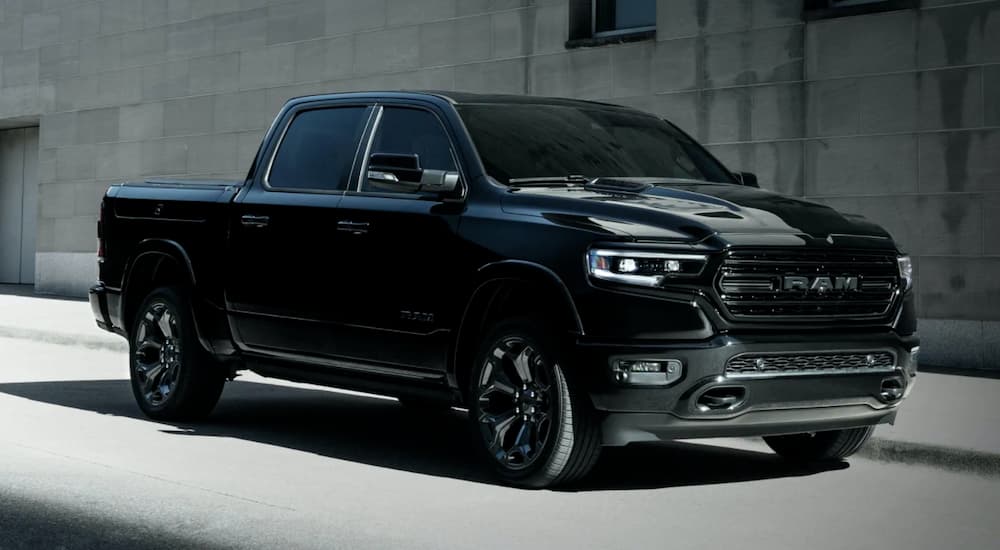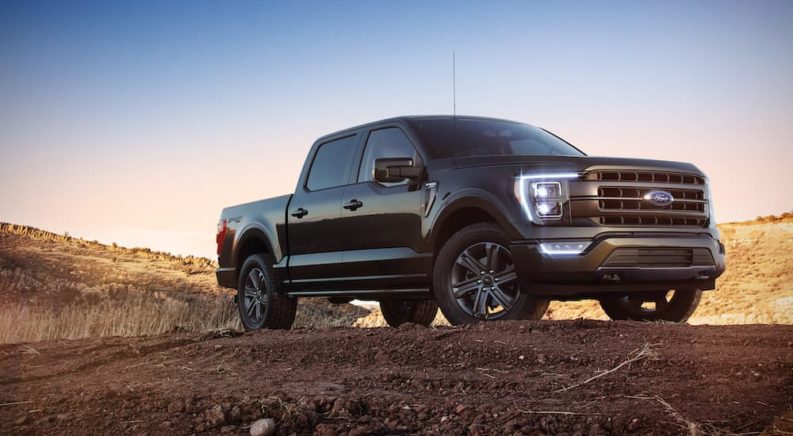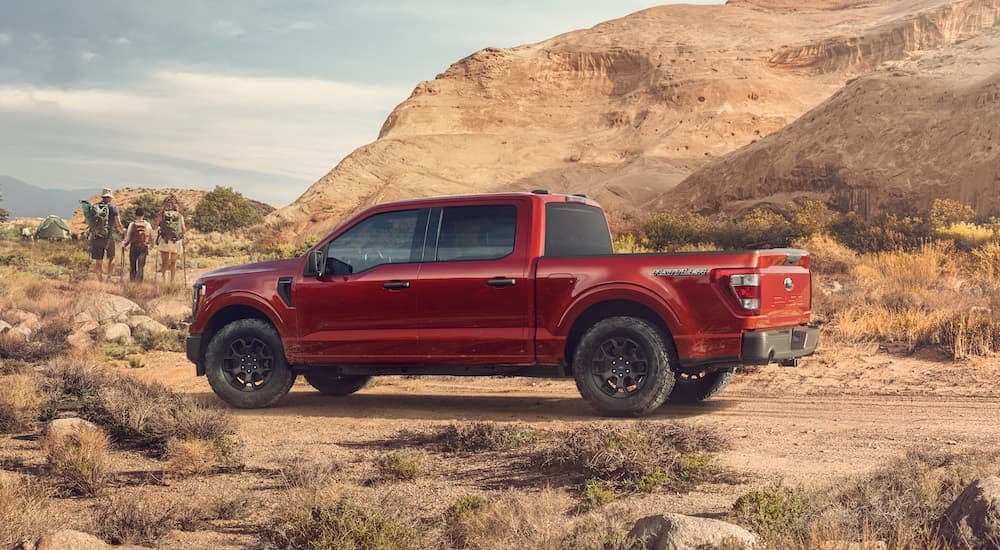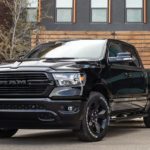Truck fans out there, I know y’all like to argue over which truck is the most impressive and the most reliable. It’s understandable, considering how much you invest in these machines, and the manufacturers certainly put a lot into their pickups as they fight for the top. If you’re a Ram fan, then you’d probably like to argue that your pickup of choice is better than Ford owners’, but I’ve got some bad news for you. The moment you take a good look at the 2023 Ford F-150 vs 2023 Ram 1500, it becomes clear that Ford has it beat in pretty much every conceivable way.
Now I know some of you might disagree, and that’s fine, but I’m going to take you through what these two trucks have to offer by the numbers, and you’ll see that the Ram 1500 falls short of the F-150 again and again. The Ram 1500 is a great truck in its own right, don’t get me wrong, but once you start really looking at the details of it against America’s bestselling truck, the disparities start to reveal themselves. But if you start feeling bad because your friend with an F-150 touts his impressive towing performance, just remember one thing: at least you didn’t buy a Nissan Titan!

Engine Options and Performance
If you’re checking out a couple of trucks, one of the easiest ways to compare them is to look at the engines they have and the kind of power they can provide. As far as I’m concerned, the engine in a truck is just as important as it is in something like a sports car––the end goal and reasoning might be different, but you’re after essentially the same thing. So for starters, the 2023 F-150 has five different engines available while the 2023 Ram 1500 has just three––I’m not counting the Ram 1500 TRX or F-150 Raptor in here because they are a separate matter entirely. We’re just focused on the main models of these two full-size pickups.
From the start, the Ram 1500 does take the lead with a more-powerful standard engine than you’ll find on the F-150. The Ram truck starts with a 3.6L Pentastar V6 with eTorque that provides 305 hp and 269 lb-ft of torque; by comparison, the F-150 starts with a 3.3L V6 that offers 290 hp and 265 lb-ft of torque. You can see the difference here isn’t exactly huge, but it’s still a point for the Ram 1500, and it’s going to need every advantage it can get.
Things start to fall apart for Ram as we go up the list of available engines for both of these pickups. The most powerful engine on the Ram 1500 is a 5.7L HEMI V8 that delivers 395 hp and 410 lb-ft of torque. There’s also an available diesel engine with 480 lb-ft of torque, but it comes at the cost of much lower horsepower. By comparison, the Ford F-150 has an available 3.5L EcoBoost Turbo V6 that puts out a massive 400 hp and 500 lb-ft of torque. If you want even more power, then there’s an available 3.5L PowerBoost Turbo V6 Hybrid engine that delivers 430 hp and 570 lb-ft of torque.
I know there are plenty of HEMI fans out there who will tell me why the engineering of their beloved engine is superior to one with greater performance numbers, but I don’t really care. The specs are simple, and the numbers are clear: the Ford EcoBoost delivers superior torque than even the diesel engine on the Ram 1500 without sacrificing horsepower. These numbers aren’t just for show either, since they translate to real-world capability.
Capability: Towing and Payload
We can all sit around comparing specs and arguing about numbers over a couple of beers, but what matters most is what the engines on these trucks can actually do. When it comes to trucks, towing and payload aren’t everything; they’re the only thing (to paraphrase one coach or another). This is one of the areas where the Ram really falls behind what the Ford F-150 can do, largely due to their differences in engines.
Even with their standard engines, however, the F-150 is quantitatively superior. It offers up to 8,200 lbs of towing capacity, while the standard engine on the Ram 1500 can haul up to 7,730 lbs. At its best, the Ram truck can manage 12,750 lbs of towing capacity with its HEMI––even with its impressive torque, the diesel engine actually loses some towing capability and can only handle 12,560 lbs of trailering. Those numbers are certainly fine and pretty impressive overall, but they just can’t keep up with the F-150.
Ford’s legendary full-size truck can handle up to 14,000 lbs of towing capacity with its available 3.5L EcoBoost Turbo V6 engine. If this was just a small difference of 100 lbs or something, I wouldn’t care so much, but this is a big difference. That’s well over 1,000 lbs more than the Ram truck can handle. Payload with both trucks is similarly shocking: the Ram 1500 can handle up to 2,300 lbs of payload capacity while the Ford F-150 tops out at 3,325 lbs of maximum payload, or about 50% more than what the Ram truck can handle.
Bed Length and Cargo Capacity
Even more shocking than the amount of weight these trucks can handle, to me at least, is how much space you can actually use to load up. This is because the Ram 1500 has only two options for its bed: a 67-inch bed length and a 76-inch length. With the shorter option, you’ll get about 54 cu.ft. of cargo space, while the longer bed increases that to just over 61 cu.ft. That’s pretty good, but the lack of a longer option is a serious misstep.
The F-150 gives Ford fans three options for the bed: a 67-inch bed, a 79-inch bed, and a 98-inch bed are all available. With these first two options, you get comparable cargo volume to the two beds offered by Ram, but the longer third choice ups that to more than 77 cu.ft. of cargo space in the truck. So you can haul more weight behind the F-150, load more weight onto it, and get a much larger bed that gives you far more room for loading up––this isn’t even about comparing numbers anymore. The F-150 is simply a more practical option for getting work done, enjoying some tailgating on the weekend, and everything else you want to do.
The F-150 Simply Puts the Ram Pickup to Shame
There’s just no metric by which the 2023 Ram 1500 can take down the 2023 Ford F-150, and it’s honestly a bit shocking once you look at it. Even its interior, where Ram likes to brag about its luxury and advanced technology, comes up short of what the F-150 has. The Ram 1500 starts with a five-inch infotainment display, and it has a larger 12-inch screen available. Similarly, there’s an available 12-inch display for the F-150, but it starts with an eight-inch infotainment screen standard.
To be fair, the Ford F-150 has been the bestselling truck in America since dinosaurs roamed the earth, and there’s a good reason for that. It’s just surprising how much more power, capability, usable space, and innovation Ford brings to the table with its truck. These days, Ram still trails behind Ford in terms of truck sales; if it wants to catch up, then it needs to compete. For starters, I’d say Ram needs to boost its vaunted HEMI engines (or switch to the new and more powerful Hurricane turbocharged I-6), engineer its trucks to get more work done, and maybe consider adding a longer bed. But that’s just me––what do you think it needs to do to improve the Ram 1500?





